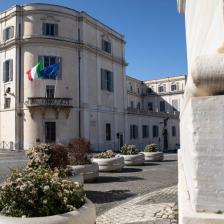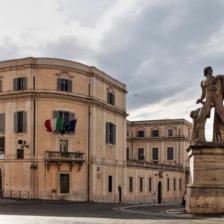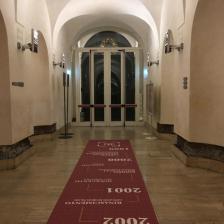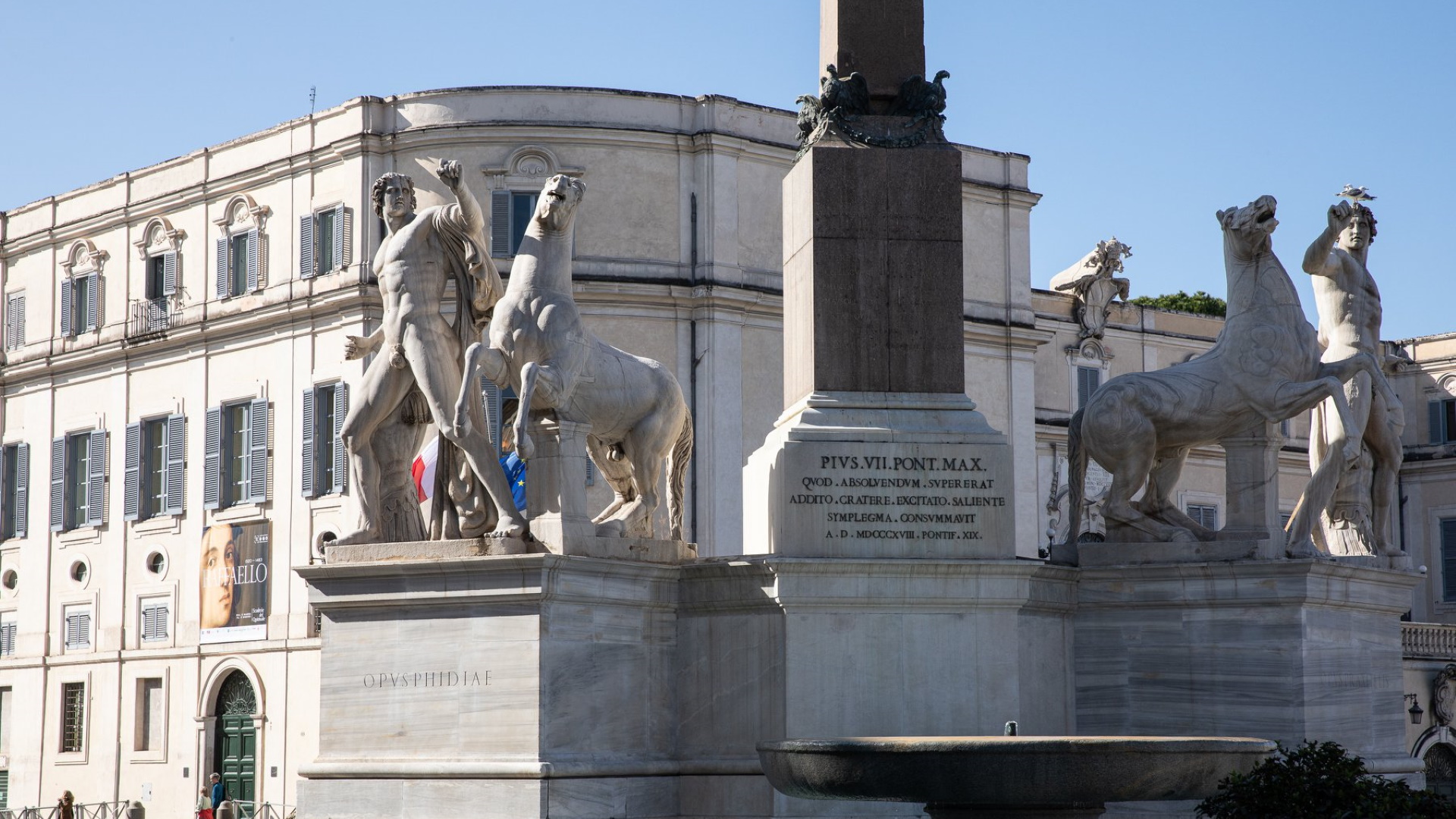
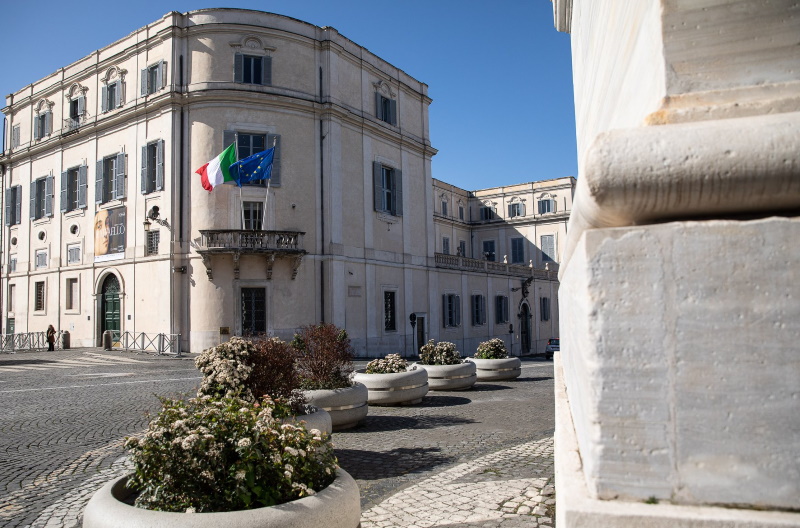
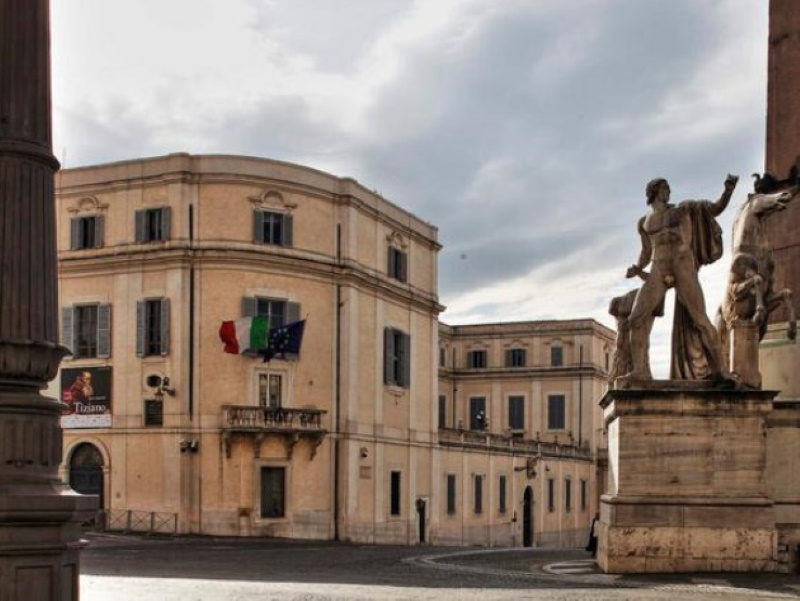
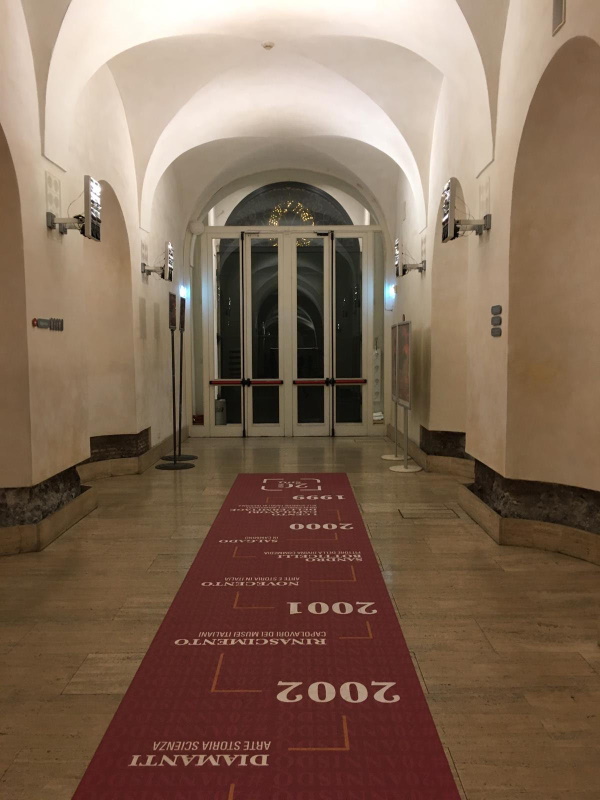
The Scuderie del Quirinale (Quirinal Stables, also called Papal Stables) was built over ten years, from 1722 to 1732. Together with the Palazzo del Quirinale (Quirinal Palace – official residence of the President of the Italian Republic) and the Palazzo della Consulta (Constitutional Court – originally a villa built upon the ruins of the Baths of Constantine and adapted by Sixtus V as a civil and criminal court), the Scuderie make up a stunning urban space.
At the center of the spacious piazza, between these three buildings, stands an obelisk – moved from nearby the Mausoleum of Augustus in the 18th century – atop a fountain and the famous statues of the Dioscuri (the two gigantic Roman marble “Horse Tamers”, Castor and Pollux). The Scuderie stands next to the Colonna gardens and on top of the archeological remains of the great Roman Temple of Serapide – some of which are still visible.
The building covers approximately 3000 square meters, over several floors. Wide-open spaces on the second and third floors house the exhibitions. A cafeteria is situated on the mezzanine level and a bookstore, a giftshop and special areas dedicated to exhibition-related initiatives are all on the ground floor.
Alessandro Specchi was the first architect to adapt the new Scuderie. Pope Innocent XIII charged him with redesigning the simple, run-down building originally put up by Carlo Fontana at the beginning of the eighteenth century. The pope's death interrupted the project for six years until, in 1730, Clement XII commissioned Ferdinando Fuga to complete the job. Fuga chose to maintain Specchi's overriding structure, but raised the mezzanine level, redesigned the facade and gave greater importance to the central doors. The original magnificent entrance, with its two semi-elliptical stairways, was rendered even more striking by the elegant balustrade added by Fuga, but it was demolished in 1865 to make room for the road leading up to “Monte Cavallo” (Horse Hill, another name for the piazza). The Scuderie building was a working stable as late as 1938, when it was modified to park cars rather than horses and carriages.
The less than perfect conditions of the Scuderie building (Quirinal Stables) and the desire to turn the building into a museum called for a decision to undertake significant restorations. The project was entrusted to the renowned Italian architect Gae Aulenti and overseen by Rome 's Superintendent of Architecture. It has allowed the city to recover a strategically placed architectural gem and puts to excellent use a building that, for its history and its dimensions, represents an exhibition space of inestimable value.
The initiative that eventually led to the complete restoration of the building was launched on February 20, 1997, when the Office of the Italian President conceded use of the Scuderie to the City of Rome. On July 10 of that year, the City entrusted the “Agenzia per il Giubileo” (an agency charged with overseeing events to celebrate the Jubilee Year) with the management of the 17th century building.
After two and a half years of work, on December 21, 1999, in the presence of the President of the Italian Republic, Carlo Azeglio Ciampi, the first exhibition was inaugurated, with a series of masterpieces from the Hermitage museum in St. Petersburg. It was also the first time that such a broad selection of works of art from the famous Russian museum had ever left their St. Petersburg home. Some 100 paintings and drawings by Degas, Monet, Renoir, Cézanne, Gauguin, le Douanier Rousseau, Vlaminck, Derain, Vallotton, Vuillard, Sisley, Pisarro, Matisse and Picasso were hosted by the Scuderie until June 2000.
Over the years guidelines were adhered to with scientific stringency and continuity when choosing topics for exhibitions at the Scuderie, including a program for boosting appreciation of both classical and modern Italian art (one has but to think of the splendid exhibitions devoted to Caravaggio, Antonello da Messina, Lorenzo Lotto, Filippino Lippi e Sandro Botticelli, Tintoretto, Tiziano. and Raphael) and an innovative and in-depth look at the relationship between Italy and the best in international art (with such exhibitions as the Majesty of Rome, Rembrandt, the Metaphysical School, Velazquez, Bernini, Luca Giordano, From Giotto to Malevic: Mutual Wonder, and Dürer and Italy), and major projects devoted to the history of world art (such as Vermeer. The Golden Century of Dutch Painting, and Frida Kahlo).
Quirinalspalast
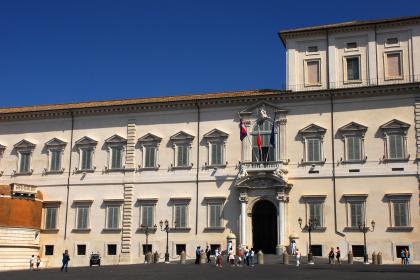
 Condividi
Condividi
Consulta Palace
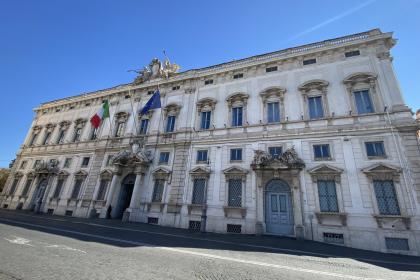
 Condividi
Condividi
Augustusmausoleum
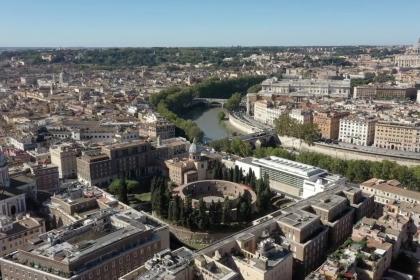
 Condividi
Condividi
Informationen
Temporarily closed
 Condividi
Condividi
Location
Um mehr über alle barrierefreien Dienste zu erfahren, besuchen Sie den Abschnitt barrierefreies Rom.












































